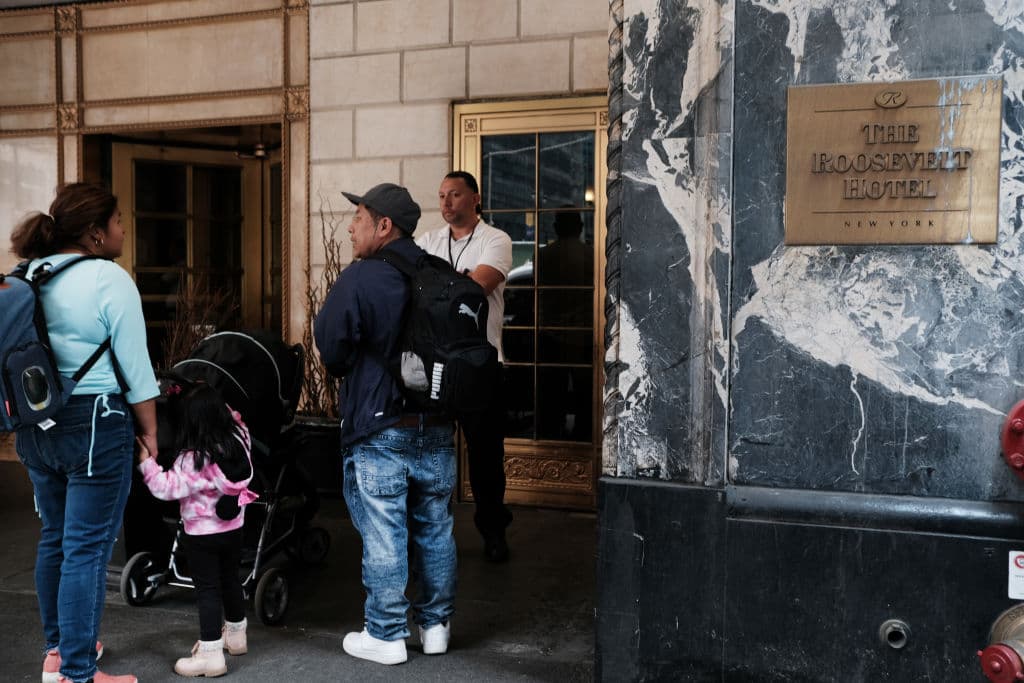Is There a ‘Right to Shelter’ at New York City?
Based on a misreading of the state constitution, the shelter requirement is the only one of its kind in America and is long overdue for a second look.

Mayor Adams’ new estimate of $12 billion a year in costs to house migrants at New York City certainly puts the spotlight on the main driver of the soaring outlays — a 42-year-old court order that mandates an open-ended “right to shelter” to all comers, for nearly any reason. Based on a misreading of New York’s state constitution, this so-called shelter requirement is the only one of its kind in America and is long overdue for a second look.
It is not our intention to suggest that New York turn its back on the needy. Yet the “right to shelter” imposed on New York during the Koch administration was already outmoded before the current influx of migrants began arriving, doubling the city’s homeless population and straining the shelter system beyond its capacity. No wonder Mr. Adams is asking a state judge to modify the order, known as the Callahan decree, to give the city more flexibility.
The usual suspects on the left, like the Legal Aid Society, are mobilizing to keep the Callahan decree’s provisions unchanged, calling for more shelter capacity and the continued use of hotels to handle overflow. Yet paying for hotel rooms for migrants is one reason for the $12 billion price tag. In response to Mr. Adams’ proposal to limit shelter stays to 60 days, the city comptroller, Brad Lander, gripes it would “gut the right to shelter.”
Defenders of the status quo overlook the fact that the system forged by the Callahan decree was never the ideal solution for homelessness. The Manhattan Institute’s Sol Stern has noted that before the decree the city relied on shelters, as well as “voluntary agencies like the Salvation Army,” and, “as a last resort,” vouchers for short-term housing at places like the Bowery, a historic haven for the down-and-out.
Critics, Mr. Stern wrote, decried this “improvised social safety net” as “inadequate and too uncertain.” Citing a provision* added during the New Deal to the state constitution, activists sued, demanding an end to any caps on shelter beds. The city yielded, and the result, in Mr. Stern’s telling, was the creation of “a vast, unprecedented gulag of drug- and crime-infested government shelters,” at a cost per shelter bed that now runs $50,000 a year.
Mayor Koch’s welfare commissioner, William Grinker, recalled of the decree that “at the time” it seemed like “the right thing to do.” Later, “there this sense of, ‘What did we get ourselves into?'” The decree forbids the city from, say, screening a shelter applicant for using drugs and alcohol, Mr. Stern said, or asking “if he had any financial assets or alternative housing.” Both Mayors Giuliani and Bloomberg attempted to reform the shelters, with no luck.
Mr. Giuliani tried to require “workfare” — along with screening for substance-abuse treatment — to secure a shelter bed. That was rejected in court, for violating, you guessed it, the Callahan decree. Mr. Bloomberg groused that “You can arrive in your private jet at Kennedy airport,” then “take a private limousine and go straight to the shelter system and walk in the door and we’ve got to give you shelter.” He gave up on trying to fix it.
Rather than address the dysfunction of the city’s shelter system, the left has been content to throw money at the problem — at taxpayer expense. Out of sight, out of mind. As Mr. Lander says, the “right to shelter” is why New York “has fewer people sleeping on our streets every night than other” big cities. Yet President Biden’s failure to control the border has now strained the city’s shelter regime to the breaking point, and something has to give.
_______________
* Article XVII, approved in 1938, says: “The aid, care and support of the needy are public concerns and shall be provided by the state and by such of its subdivisions, and in such manner and by such means, as the legislature may from time to time determine.”
Correction: The Callahan decree was imposed 42 years ago. An earlier version misstated the number.

